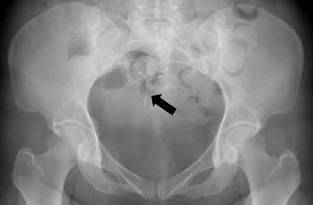DOI: 10.12809/hkmj134192
LETTERS TO THE EDITOR
Co-infection of influenza B and Streptococcus
Beuy Joob, PhD1; Viroj Wiwanitkit, MD2
1 Sanitation, Medical Academic Center, Bangkok, Thailand
2 Hainan Medical University, China; Faculty of Medicine, University of Nis,
Serbia
To the Editor—The recent report on 'co-infection
of influenza B and
Streptococcus' by Lam et al
1 is
very interesting. They reported "four cases infected
with influenza B and streptococci that gave rise to
severe pneumonia" and mentioned that "this is the
second case report of severe invasive pneumococcal
pneumonia secondary to influenza B infection."
1
Indeed, both influenza B and
Streptococcus infections are important infectious diseases that are
encountered worldwide. In fact, there are more than
two previous publications reporting the concurrent
infection of influenza B and
Streptococcus.
2 3 In the
report by Aebi et al,
2 three cases were document and
additional four cases were presented in the report by
Scaber et al.
3 Hence, the claim by Lam et al
1 should
not be correct. Nevertheless, in all reports, the
clinical features of the pneumonia were serious and
sometimes fatal. As Lam et al
1 suggested, physicians
should increase awareness of possible concurrent
infection in the present era of emerging influenza.
References
1. Lam KW, Sin KC, Au SY, Yung SK. Uncommon cause of severe pneumonia: co-infection of influenza B and
Streptococcus. Hong Kong Med J 2013;19:545-8.
Crossref
2. Aebi T, Weisser M, Bucher E, Hirsch HH, Marsch S,
Siegemund M. Co-infection of influenza B and streptococci
causing severe pneumonia and septic shock in healthy
women. BMC Infect Dis 2010;10:308.
Crossref3. Scaber J, Saeed S, Ihekweazu C, Efstratiou A, McCarthy
N, O'Moore E. Group A streptococcal infections during the seasonal influenza outbreak 2010/11 in South East
England. Euro Surveill 2011;16 pii:19780.
Authors' Reply
KW Lam, MB, BS, FHKAM (Medicine); KC Sin, MB, BS; SY Au, MB, BS; SK Yung,
MB, BS
Intensive Care Unit, Queen Elizabeth Hospital, Jordan, Hong Kong
To the Editor—Our report concerned severe
pneumonia due to co-infection of influenza B and
streptococcus. Scaber et al
1 described a series of
19 invasive streptococcal infection cases affecting
a variety of organs. Scaber's objective and emphasis
were different from that of Aebi et al
2 and our report.
3
Moreover, Scaber et al1 did not provide much
clinical details of the patients, such as laboratory
investigation findings and complications. Therefore,
their article
1 was not included in our reference list.
We would nevertheless like to thank Drs Joob and
Wiwanitkit for their comments. The mentioned
studies certainly enhance awareness of this serious
co-infection of influenza B and streptococcus and
alert physicians and other health care professionals.
References
1. Scaber J, Saeed S, Ihekweazu C, Efstratiou A, McCarthy N, O'Moore E. Group A streptococcal infections during the seasonal influenza outbreak 2010/11 in South East England. Euro Surveill 2011;16 pii:19780.
2. Aebi T, Weisser M, Bucher E, Hirsch HH, Marsch S, Siegemund M. Co-infection of influenza B and streptococci causing severe pneumonia and septic shock in healthy women. BMC Infect Dis 2010;10:308.
Crossref3. Lam KW, Sin KC, Au SY, Yung SK. Uncommon cause of severe pneumonia: co-infection of influenza B and
Streptococcus. Hong Kong Med J 2013;19:545-8.
Crossref



